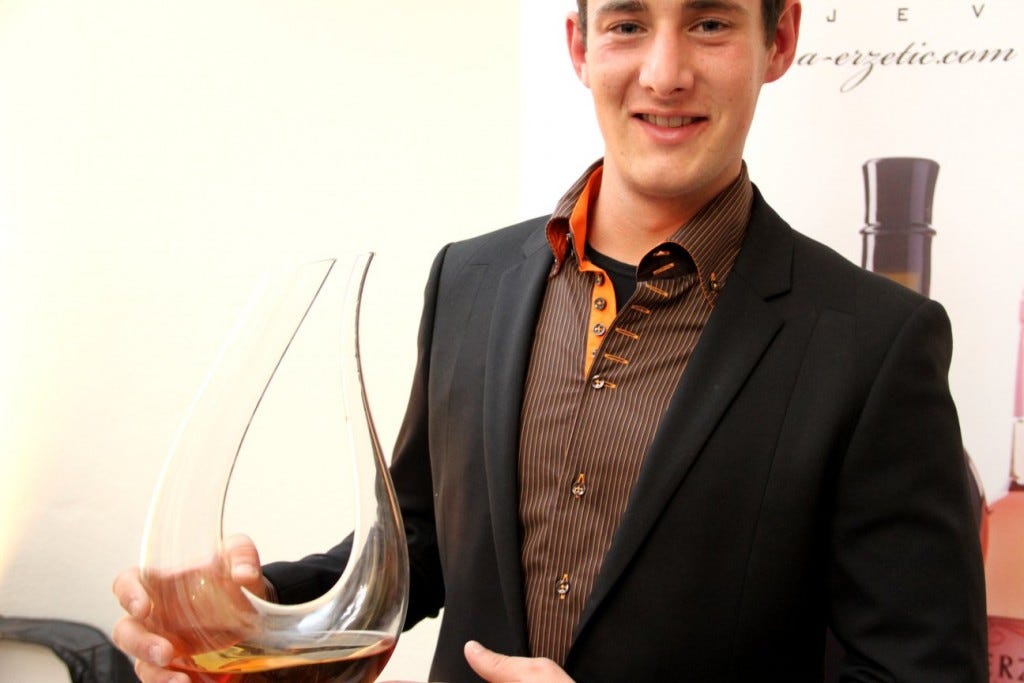A new discovery at the Orange Wine Festival - Erzetič Amphora Belo 2011
This autumn's Orange wine festival (Vienna edition) was once again a busy, joyful occasion with some 80 producers from 9 countries, and 500 or more enthusiastic tasters. Many great producers were in the room, but one new discovery wowed me enough to want

Every week, I select an orange wine (a white wine made with extended skin contact) that grabbed my attention. View the whole series here.
This autumn's Orange wine festival (Vienna edition) was once again a busy, joyful occasion with some 80 producers from 9 countries, and 500 or more enthusiastic tasters. Many great producers were in the room - Radikon, La Castellada, Dario Prinčič, Clai, Roxanich to name only a few. Their wines served as a tough benchmark, hard to even equal, let alone surpass. But one new discovery wowed me enough to want to share it here.
Erzetič is a long established winery in Goriška Brda (effectively the Slovenian part of Friuli Collio), with 5ha of vines. Andrej Erzetič, the youngest member of the family involved in production, told me winemaking here can be traced back to 1721.
Keep reading with a 7-day free trial
Subscribe to The Morning Claret to keep reading this post and get 7 days of free access to the full post archives.




